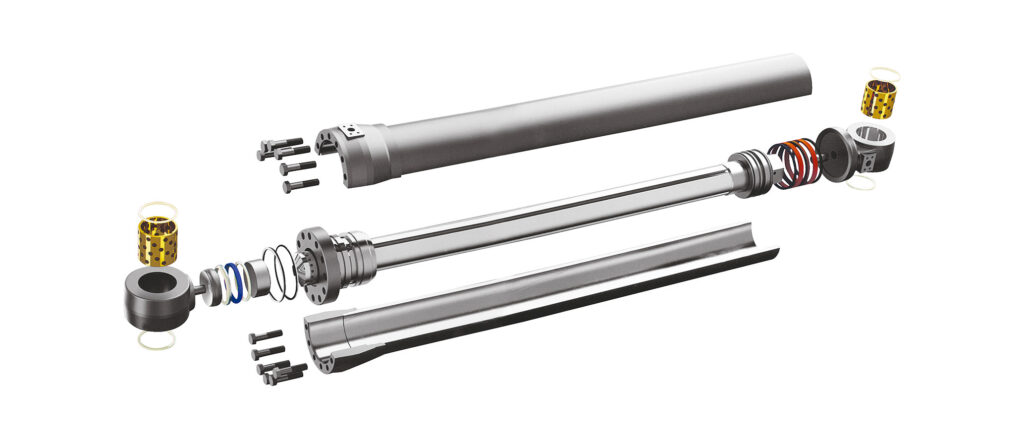Drift, fluid leaks, or performance changes can indicate a hydraulic cylinder needs repacking. The process is simple and quick. Step-by-step instructions for repacking a hydraulic cylinder.

Workspace prep
Clean your workspace before disassembling and repacking the hydraulic cylinder to avoid contamination. We recommend opening your hydraulic cylinder repacking kit when ready to instal new seals. Repacking a hydraulic cylinder requires:
- Hydropacking kit (search by equipment model to find a kit compatible with your cylinder)
- Hydraulic oil replacement
- Piston rod wrench
- Clean, lint-free cloths to wipe parts and spills
- Large container for old hydraulic oil
SAVE! If you plan to use equipment for lifting or supporting weight, use jacks or blocks. This prevents injury and damage to expensive piston assemblies.
Hydraulic Cylinder Repacking
TIP: During disassembly, note the location of each component to ensure proper reassembly. Check for fluid leaks and corrosion, damage, or wear on cylinder components and mounts.
Slow and careful work will yield a leak-free hydraulic cylinder.
- Drain the cylinder.
- Disconnect the cylinder’s hydraulic lines.
- Removing lines lets the cylinder’s remaining pressure escape.
- Ensure the hydraulic cylinder won’t fall.
- Once everything is stable, remove the cylinder’s pin.
- Discard the cylinder gland.
- This varies by manufacturer. Some glands are bolted, and others require a special tool inserted into small holes to turn. A small tap or hammer bump may loosen the gland. Once loose, it should unscrew from the piston rod.
- Remove cylinder piston rod.
- Keep the piston rod from touching other metal or falling. You risk contaminating or damaging the piston rod. When removing the rod, be careful not to damage the cylinder’s threads. These parts are expensive to replace.
- Different methods hold the rod to the piston.
- A piston can be attached to a threaded rod directly or with a nut or nut and bolt. When the rod is free from the cylinder, remove the piston. Keep parts in order and snap a photo if needed.
- Replace piston and gland seals one-by-one.
- This reduces confusion and improves placement. Use the correct seal. Thin seals can be damaged if not installed evenly. Before replacing a part, clean each groove.
- Reassemble piston and rod.
- Replace piston rod bolts with thread locking adhesive. Before reassembling, lubricate and clean all parts.
- Reinstall the gland.
- Never lock gland threads.
- Replace all hydraulic lines and test seals for leaks.
Repacking hydraulic cylinders as part of annual maintenance extends their life. This repacking procedure should work for most welded rod cylinders. If you have questions, consult a professional.
TZ. offers hydraulic cylinder seal kits. Our inventory includes hydraulic cylinder pistons, heads, mounts, and other service parts. Contact us. E-mail:cylindermark001@gmail.com tel: +8615159880746
